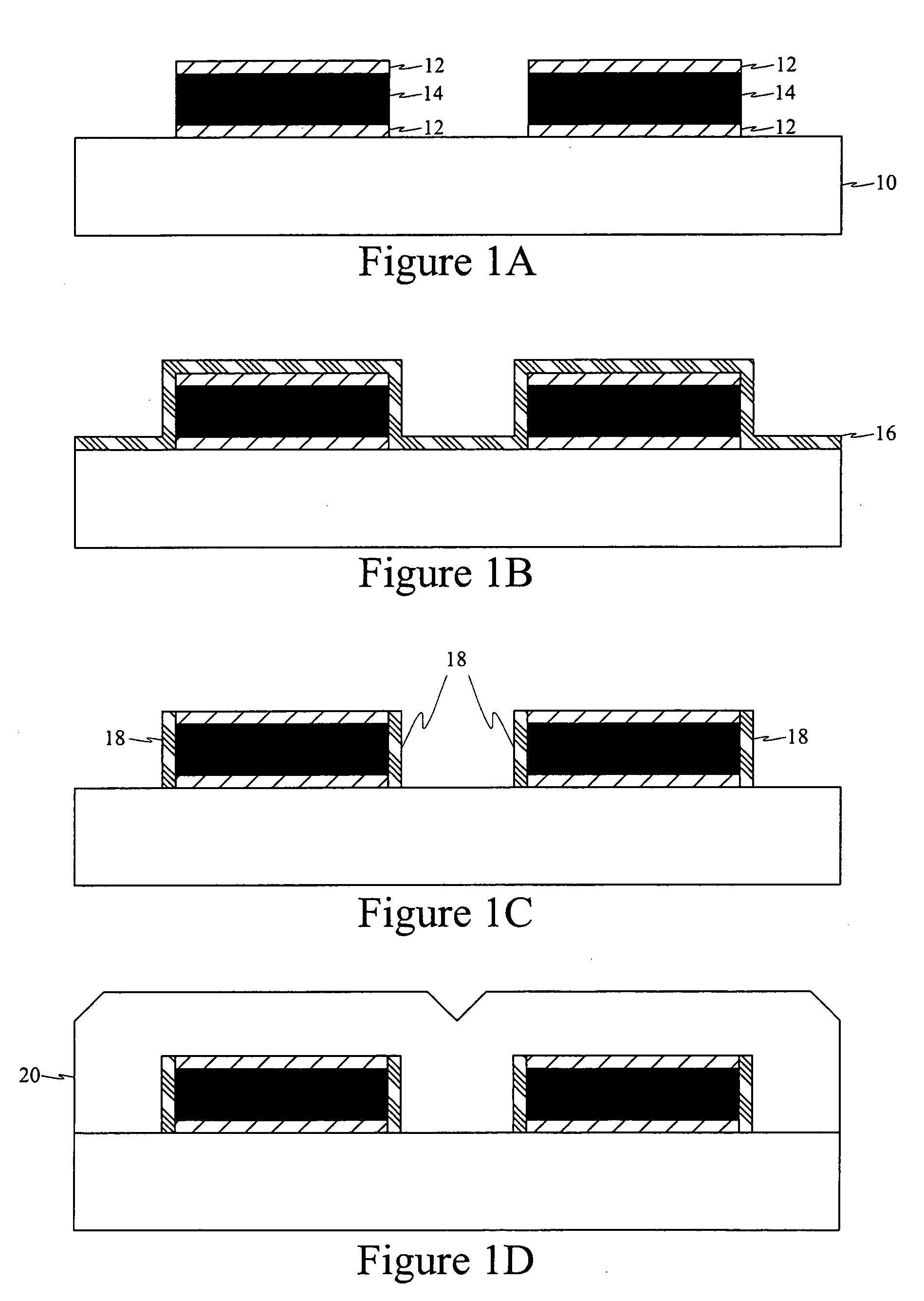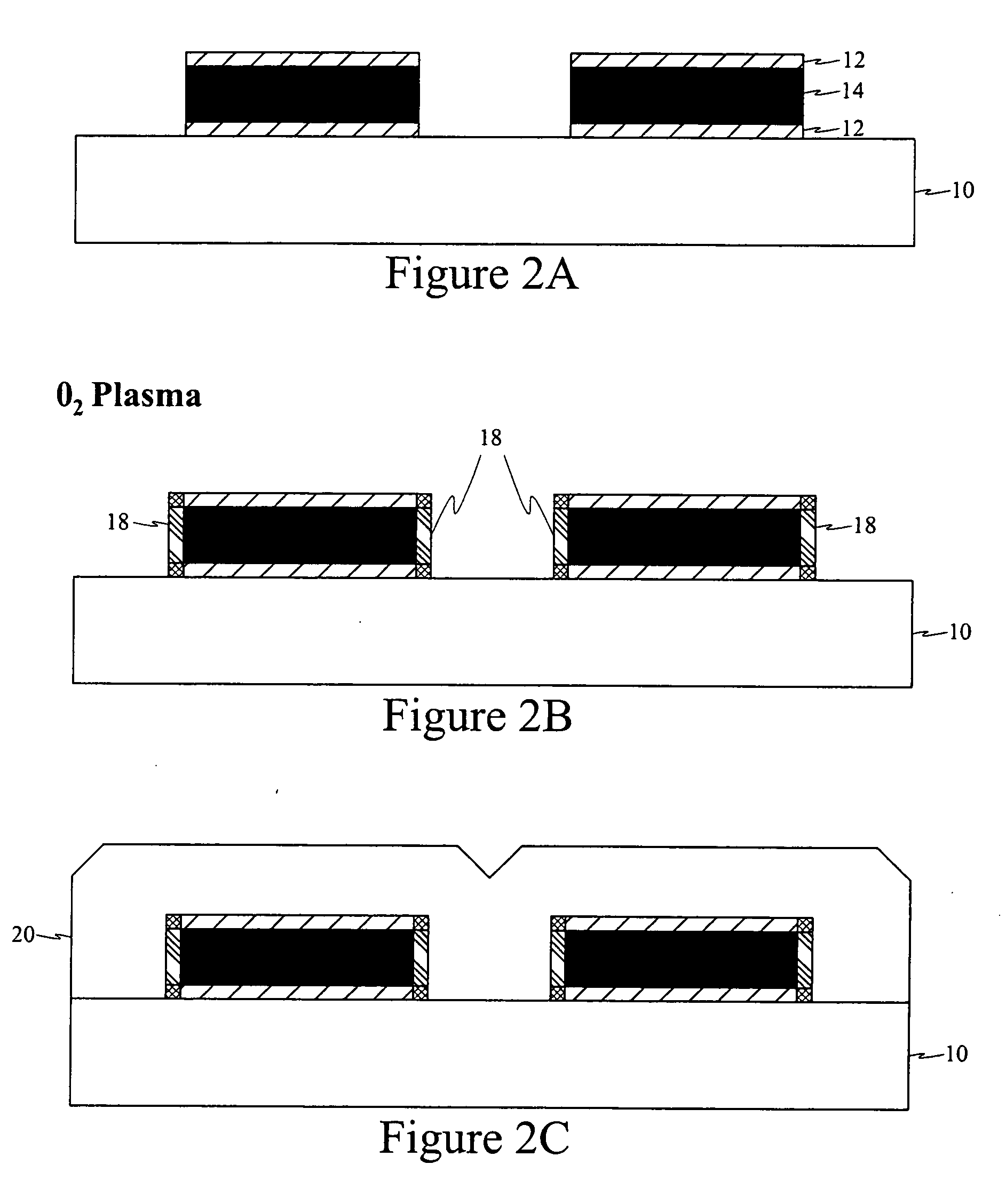Method and apparatus for preventing metal/silicon spiking in MEMS devices
a technology of metal/silicon spiking and mems devices, which is applied in the manufacture of microstructural devices, electrical apparatus, and semiconductor devices, etc., can solve problems such as adverse effects on the underlying devices, and achieve the effect of preventing spiking
- Summary
- Abstract
- Description
- Claims
- Application Information
AI Technical Summary
Benefits of technology
Problems solved by technology
Method used
Image
Examples
Embodiment Construction
[0011]FIG. 1 schematically illustrates a method for preventing extrusion according to one embodiment of the disclosure. Referring to FIG. 1A, substrate 10 is provided having deposited thereon barrier layers 12 and the conductive layers 14. Substrate 10 can include conventional semiconductor material such as silicon. Semiconductor substrate 10 may have a plurality of MOS transistors (not shown) incorporated therein. The barrier layer can be formed from titanium nitride (TiN), titanium (Ti), tungsten nitride (WN), an alloy of titanium and tungsten (Ti / W), silicon dioxide or silicon nitride. The barrier layer serves to prevent spiking (or extrusion) between the conductive layers (interchangeably, the metallization layers) 14 and substrate 10. In one embodiment, the barrier layer has a thickness of about 200-500 Angstroms. The barrier layers can be deposited using conventional deposition techniques including CVD or PVD.
[0012] The metallization layer 14 can be formed from aluminum, copp...
PUM
| Property | Measurement | Unit |
|---|---|---|
| temperature | aaaaa | aaaaa |
| thickness | aaaaa | aaaaa |
| dielectric | aaaaa | aaaaa |
Abstract
Description
Claims
Application Information
 Login to View More
Login to View More - R&D
- Intellectual Property
- Life Sciences
- Materials
- Tech Scout
- Unparalleled Data Quality
- Higher Quality Content
- 60% Fewer Hallucinations
Browse by: Latest US Patents, China's latest patents, Technical Efficacy Thesaurus, Application Domain, Technology Topic, Popular Technical Reports.
© 2025 PatSnap. All rights reserved.Legal|Privacy policy|Modern Slavery Act Transparency Statement|Sitemap|About US| Contact US: help@patsnap.com



